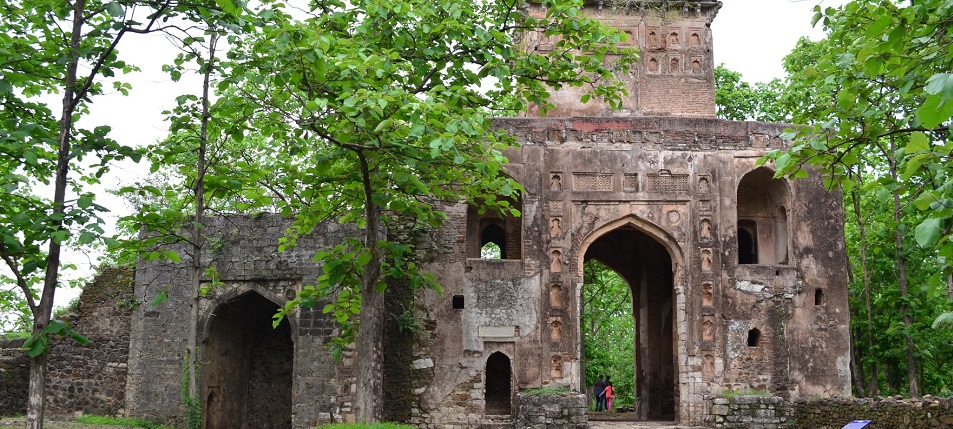Nestled within the formidable Satpura range in Madhya Pradesh, Chhindwara stands as the largest district, showcasing a picturesque landscape adorned with Chhind, or white date palm trees. The city, situated 110 km from Nagpur, thrives on a cultural tapestry woven by diverse tribal communities like Gond and Pradhan Korku, coexisting harmoniously amid lush plantations. Chhindwara's cultural richness is evident in its vibrant festivals such as Mahadev Mela, Pola, and Meghnath, contributing to its allure as a delightful destination. Positioned along the banks of the Bodri Stream, a tributary of the Kulbhera River, the town boasts a bountiful array of flora and fauna, enhancing its natural charm.
Renowned as the corn city of India, Chhindwara takes pride in its significant role in Madhya Pradesh's corn production. Beyond its agricultural prominence, the city's historical significance adds to its appeal, drawing visitors for both religious and historical exploration. The expansive Satpura Range accommodates impressive temples, museums, and other notable landmarks, establishing Chhindwara as a sought-after destination.
For those contemplating a visit, the months of October and November present an ideal window. The weather during this period is moderate, with daytime temperatures ranging from 29 to 32 degrees Celsius, and nighttime temperatures fluctuating between 14 and 20 degrees Celsius. This time of the year offers a tranquil experience, free from the harsh extremes of scorching sunlight or freezing cold, making Chhindwara a perfect retreat during the soothing autumn season.
Must-visit iconic landmarks of Chhindwara district
1. Devgarh Fort
Devgarh Fort stands as a captivating historical site in Chhindwara, crafted by King Jatba of the Gond Dynasty. The lush surroundings, adorned with dense forests, transport visitors to the 15th century, revealing a tapestry of rich history. Explore the Nagarkhana, Darbar Hall, and hidden passages during your visit, each echoing the echoes of a bygone era. The Mughal architectural remnants on the fort's weathered walls, composed of stones and bricks, add a mesmerising touch. Even today, seekers venture here in pursuit of hidden treasures, with walls and grounds bearing witness to numerous excavations.
2. Tribal Museum
The Tribal Museum, a repository of artefacts, offers a glimpse into the unique lifestyle of the local tribes in the district. From clothing and houses to ornaments, agriculture tools, and religious practices, the museum, formerly known as the State Museum since 1975, now bears the name "Shri Badal Bhoi State Tribal Museum" in honour of the groundbreaking tribal leader. Shri Badal Bhoi's pivotal role in India's freedom movement during British rule is commemorated, emphasizing his sacrifice through a name change in 1997.
3. Pench National Park
For nature enthusiasts, Pench National Park, known as the land of origin of Mowgli, the protagonist of Kipling’s ‘The Jungle Book’, promises an immersive experience. The park's diverse flora and fauna, dominated by tigers, also feature species like the spotted deer, leopard, gaur, four-horned antelope, Indian gazelle, and a variety of migratory birds. The Best Time to Visit Pench is from November to February.
4. Chota Mahadev Cave at Tamia
Escape the urban hustle by journeying to Chota Mahadev Cave in Tamia, a spiritual retreat just 32 miles from Chhindwara. Surrounded by steep hills, winding ghats, and lush greenery, the cave temple offers a serene atmosphere for worship. Pay homage to the holy Shivling and savour the picturesque view of the nearby waterfall, creating an enchanting experience.
5. Patalkot
En route from Bhopal to Chhindwara, discover the enthralling Patalkot Valley, nestled approximately 73 km from the city. This valley, perched at an altitude of 1200-1500 ft, provides a haven for nature enthusiasts, offering adventure opportunities like hiking, trekking, and camping. Home to the 'Bharia' and 'Gond' tribes, Patalkot unfolds as a treasure trove of forest and herbal wealth. The temple's profound location justifies the name 'Patalkot,' resembling a horseshoe from the top. Legend has it that Prince 'Meghnath' journeyed through this valley to worship Lord Shiva in Patal-lok.

